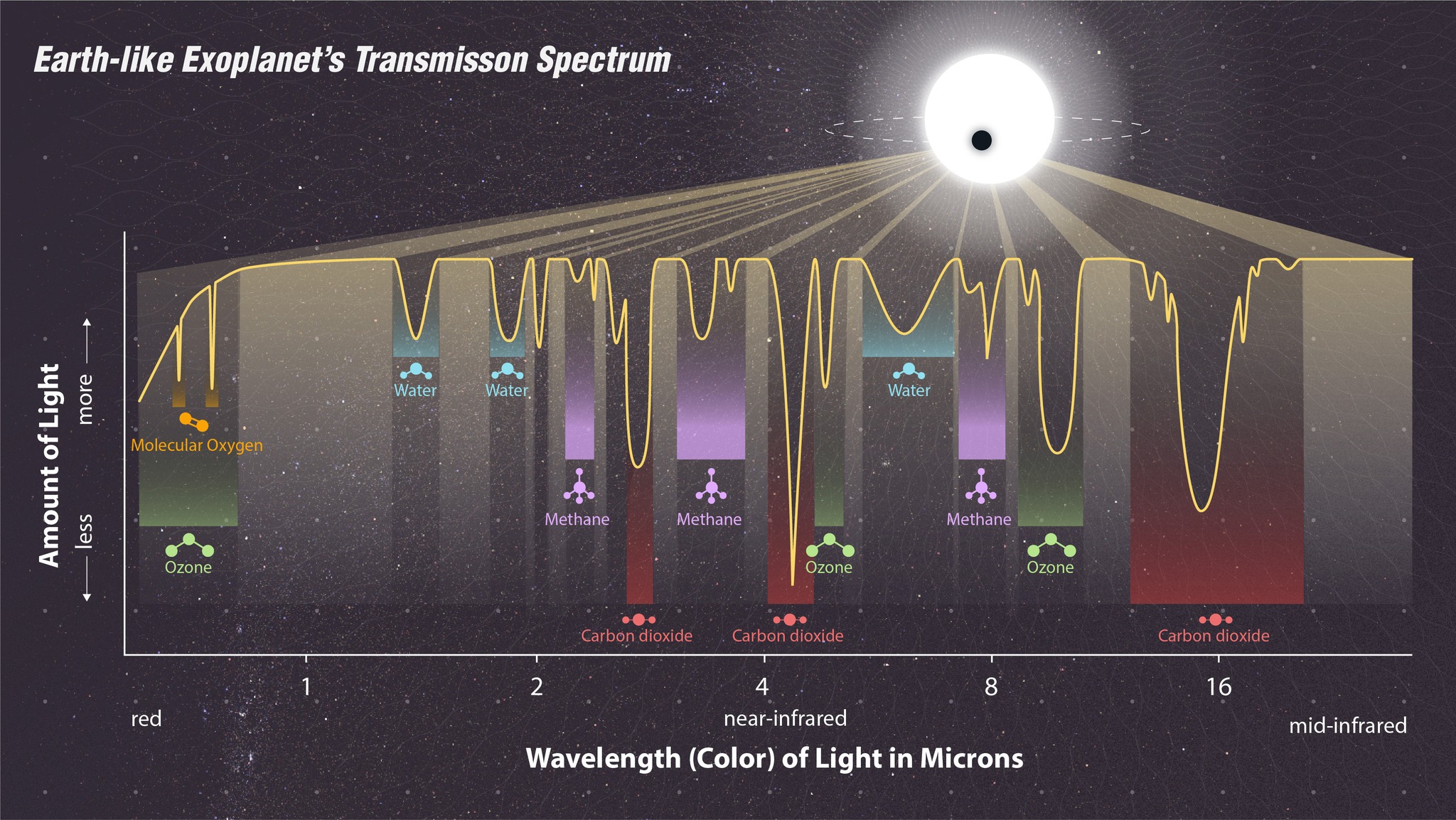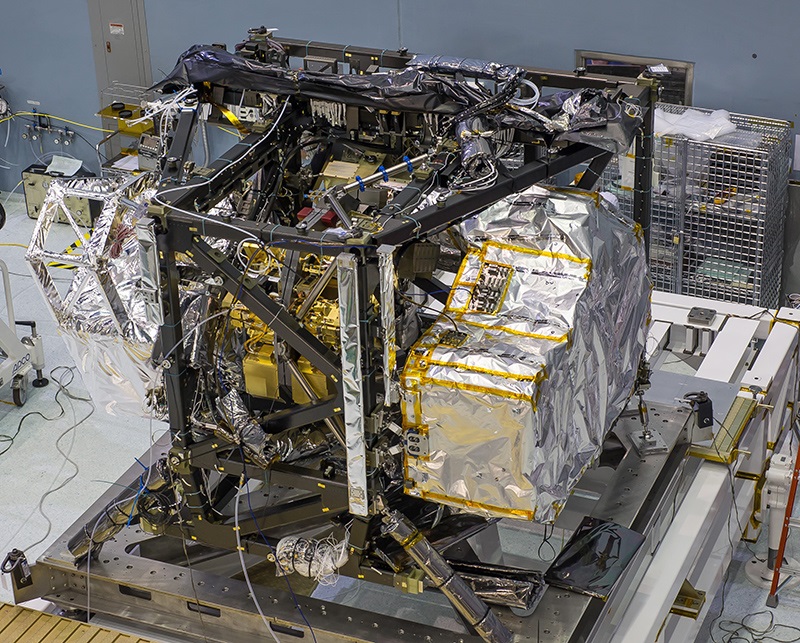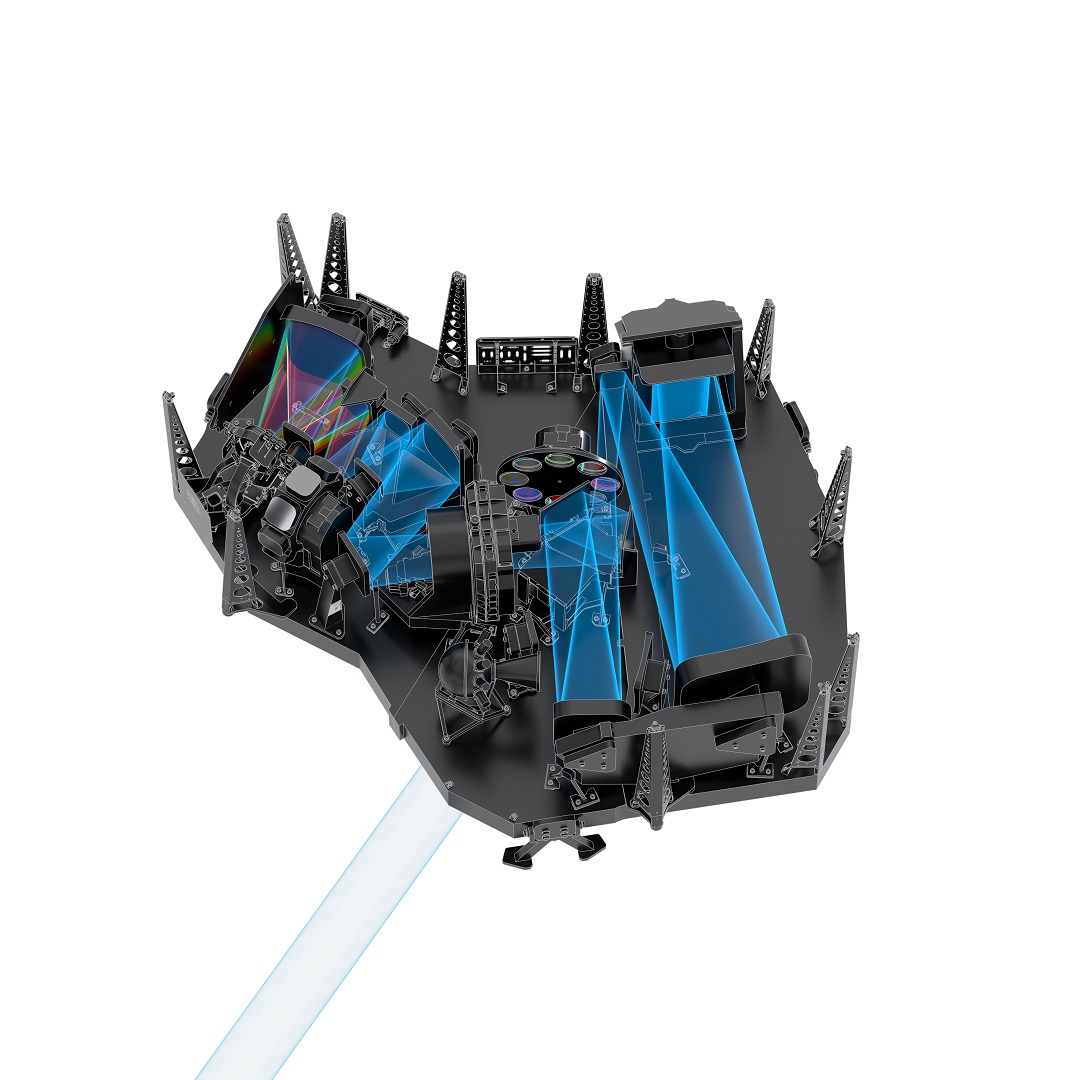After sailing 1.5 million km in 30 days, Webb finally arrived the second Lagrange point (L2)! The frigid and stable temperature environment of L2 will allow Webb to make sensitive infrared observations.
Last time, we mentioned that Webb will target sub-Neptune exoplanets. So, why are astronomers interested in them and why is it worth using a $10-billion-telescope to observe? One reason is that astronomers are looking for oceans and even signs of life on sub-Neptunes.
We can't image the surfaces of exoplanets directly with today's technology. Instead, astronomers use the transmission spectra of exoplanets to infer the composition of their atmospheres. When starlight enters a spectrograph, the light is dispersed into different colours and forms a spectrum. When an exoplanet passes in front of its host star (a phenomenon known as "transit"), the atoms or molecules in this exoplanet's atmosphere absorb or emit light at particular wavelengths, leaving unique fingerprint imprints on the spectrum that reveal the atmospheric composition of the exoplanet.
But how to confirm the existence of sub-Neptune's ocean from spectroscopy?
Recently, scholars have stated that if a sub-Neptune exoplanet has a hydrogen atmosphere, a thermochemical equilibrium occurs when the surface temperature reaches about 770 degrees Celsius. Consequently, methane and ammonia build up in the atmosphere which will show up in the planet's spectrum. In that case, the planet's surface is too hot to harbour an ocean. Whereas if imprints of carbon dioxide and nitrogen molecules are found from the spectrum, the thermochemical equilibrium could not be reached. The planet may be cool enough to have oceans.
The existence of alien oceans depends on several factors. Do you think Webb will find one of them?







